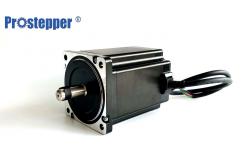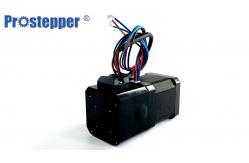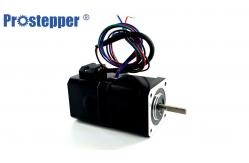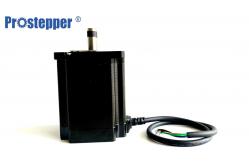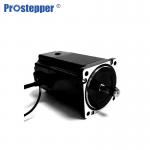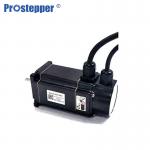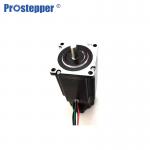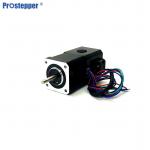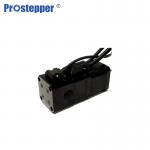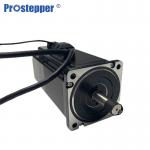12N.m NEMA34 2 phase hybrid bipolar stepper motor with encoder 1.8
stepping motor for Office Automation
Specifications
| Holding Torque | 12N.m | | Related Current | 6A/Phase | | Resistance | 0.7Ω/Phase | | Inductance | 7.3MH/Phase | | Inertia | 5400g.cm² | | Index | × | | Output | Differental | | Black Torque | 5N.m
|
| Model | E1K | E2k5z | Model | PEM57/PEM60 | | Resolution | 1000cpr/4000ppr | 2500cpr/10000ppr | Brake Type | Holding Brake | | Type | Incremental encoder | Incremental encoder | Voltage | 24VDC±5% | | Output Mode | Differental | Differental | Power | 5W | | Output Signal | A+A-;B+B- | A+A-;B+B-;Z+Z- | Torque | 1.3N.m | | Supple Voltage | 5VDC±5% | 5VDC±5% | Release Time | 50ms
|
Product description of 1.8 stepping motor
The rotational speed of the
stepping motor can be precisely controlled ,By controlling the
frequency of the electric pulse. - Automatic machine operation, stable automatic work, high processing
efficiency.
The Fulling product line is sold to major manufacturing Companies
for Industry of automation, medical andhealth care equipment,
printer machine, packing device,Information Technology,household
appliance,product,AGV and automobile.
- The material is selected from well-known manufacturers at home and
abroad. The advantages are light weight, good heat dissipation
performance, good thermal conductivity, die-casting, good
plasticity, higher elongation than iron, low noise, good motion
stability, the disadvantages are high price, low hardness
- Material quality: The coat is 304 stainless steel, the water jacket
is the high compression casting aluminum tube, the red copper coil.
- Speed/Torque Characteristics(Reference Value)
Ti What is stepper motor? - Stepper motor is an actuator transforming electric pulse into angular
displacement. Popularly, when receiving a pulse signal, the stepper
motor wi ll rotate a fixed angle (namely ''stepping angle'')
according to the direction set for the stepper motor. The angular
displacement volume can be c ontrolled by controlling
the pulse number to achieve the purpose of positioning accurately.
In the meantime, the rotational velocity and acceleration of motor
can be controlled by controlling the pulse frequency to achieve the
purpose of speed control.
The Advantages of Stepper Motors - Not every application will benefit from a stepper motor, but in the
right environment stepper motors can be ideal. First, stepper
motors have full torque at standstill, and the rotation angle of
the motor is proportional to the input pulse. Essentially, stepper
motors offer excellent speed control, precise positioning, and
repeatability of movement.
- Additionally, stepper motors are highly reliable since there are no
contact brushes in the motor. This minimizes mechanical failure and
maximizes the operation lifespan of the motor. These motors can be
used in a wide range of environments, as many different rotational
speeds can be achieved because the speed is proportional to the
frequency of pulse inputs.
Applications of Stepper Motors
Stepper motors are diverse in their uses, but some of the most
common include: - 3D printing equipment
- Textile machines
- Printing presses
- Gaming machines
- Medical imaging machinery
- Small robotics
- CNC milling machines
- Welding equipment
Quality control process: - Incoming inspection: The inspection shall be conducted according to
the Requirements of the Incoming Inspection Specification or the
product drawing
- Monitoring and measurement of production process (self-inspection -
inspection - batch production)
- Final inspection and test
- All inspectors must be trained and then put on duty
- Nonconforming products shall be executed in accordance with
Nonconforming Product Control Procedures
- Raw material inspection
- Inspecting according to the standard of testing raw material or the
drawing
- Monitoring and measurement in production process
- Self checking-tested by QC-Batches production
- Final checking and make experiment
- All products should be through testing by the professional
equipment
|

